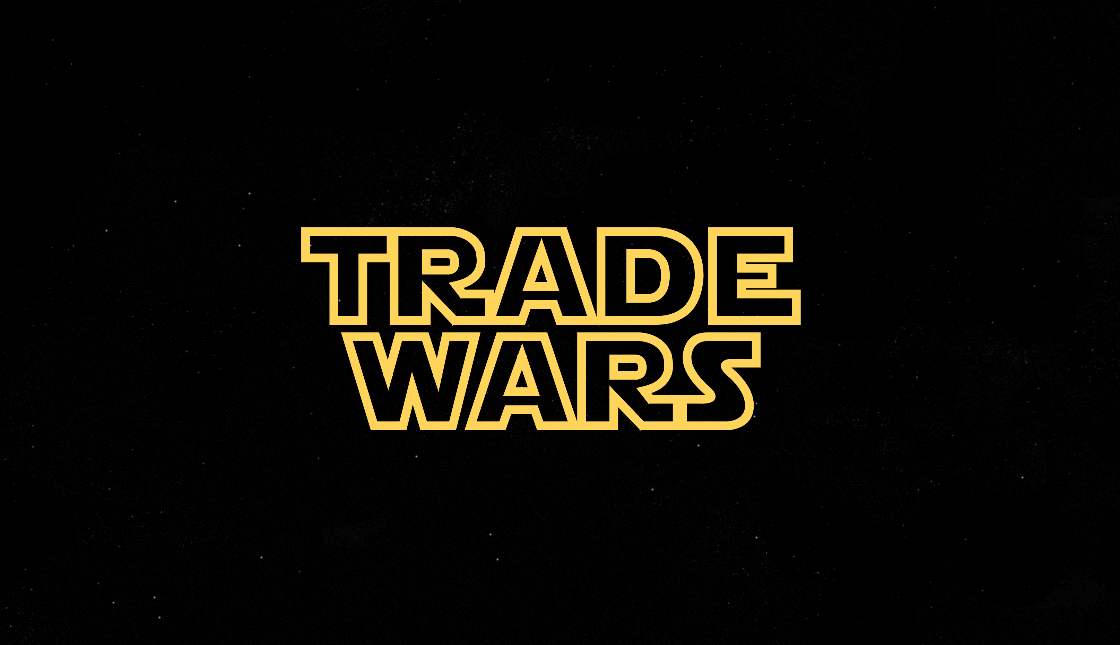Human rights issues surrounding the Mexican border debacle, with the inevitable negative impact on worldwide perceptions of US immigration tactics, rated high in news-cycles and on social media in recent weeks.
Despite this, news and discussion within financial circles have been dominated with the upset in financial markets by the looming prospect of so-called trade “wars”, primarily between the USA and China, and latterly with the EU and Canada.
This is what we’ll be focussing on in this month’s rundown.

Trade Wars – In the beginning…
It all started when President Trump’s election campaign tapped into voter fears about losing out from globalisation, and rhetoric surrounding Chinese ‘theft’ of US intellectual property.
Trump said “[China has]… long been engaging in several unfair practices related to the acquisition of American intellectual property and technology. These practices… harm our economic and national security”.
This initiated the dispute with China with a notable lack of support from his allies. He was then spurred on to point fingers at the EU and Canada, and turn the heat up on already simmering international trade disputes.
In the crosshairs…
Canada sets domestic production quotas and imposes tariffs of up to 270% on dairy products, to keep prices stable and ensure income stability for Canadian farmers. This may seem like extreme protectionism, but domestic politics make it extremely difficult for Canada to do anything about it.
Likewise, the EU has high external tariffs on agricultural products, bans US Genetically Modified (GM) food products, and charges a 10% tariff on cars, versus a 2.5% tariff in the USA.
Germany, the industrial powerhouse of Europe, and the world’s third-largest exporter of merchandise derives over 50% of its GDP from exports. Currently experiencing internal political struggles itself, with Markel’s leadership coming under threat from an unhappy union within the coalition government. Germany is also in Trump’s crosshairs over failure to honour NATO defence spending pledges, 10% tariffs on car imports and a large current account surplus with the United States.
The issue…
When compared with the rest of the developed world, particularly with tariffs on agricultural products between the USA and the EU, US tariffs have been very modest for several decades. Trump intends to challenge this apparent inequality.
Although the media has focussed more on Trump’s tactics than the tariffs that birthed them, the challenge is trying to reconcile the Trump approach with international trade negotiations and the attitude of the Chinese and Europeans.
Many of the tariffs and trade practices Trump has highlighted are hard to justify but equally hard to negotiate away. Trump does not think ‘internationally’, has no regard for domestic politics or historical protocols for resolving these kinds of issues, and expects everyone to accept his proposals unconditionally. Trump wants immediate action to eliminate what he regards as obvious tariff inconsistencies rather than enter into endless rounds of negotiations.
How this has affected markets
Markets don’t like uncertainty, disruption, or change to long-held agreements and perceptions of how the world works, and the perceived wisdom is that raised tariffs were a key factor in turning the 1930s recession into the Great Depression (1930 Smoot-Hawley Act).
Companies towards the mid and lower end of the market capitalisation scale will be much more influenced by domestic economics (fiscal reform, deregulation etc.) when compared to their large-cap, Dow Jones cousins. For these smaller companies, performance year-to-date has been strong, and the outlook generally remains optimistic.
Equity markets have reacted badly, with the Chinese equity market hitting a 2-year low during June. The US market has held up, although Chinese threats to impose tariffs on agricultural imports are already impacting US agricultural commodities.
The Chinese intention here is to put pressure on US rural communities who are generally staunch Trump supporters. They have started to achieve this with the price of US Soybean futures falling sharply.
Unsurprisingly, in Europe, Germany’s main equity index (DAX) sold off heavily following additional tariff announcements.
What happens next?
As many of the investment trends seen in recent months continue, summer headlines, it seems, will inevitably be liberally infused with trade and tariff dispute adversity.
With the US economy performing strongly and the rest of the world less so, Trump will feel he has timed his rhetoric well even if the current wave of US euphoria may toll the bell for an imminent downturn and a long overdue polar switch (already realised in China) from a bull to a bear market.
Chinese imports from the US are only a quarter of the value of Chinese exports to the US, but there is more than one way to skin a cat. We could see state-organised boycotts of US products – a tactic the Chinese have previously used with Japan.
China could stop buying US debt, (U.S. Treasuries) or even start selling some of the $1.18 trillion they currently own. Alternatively, the Chinese government may decide merely to flex their significant political muscle to leverage influence in key geopolitical issues of substantial US interest, like North Korea or Taiwan.
Domestic considerations make a compromise from Canada or Mexico difficult. The EU’s approach to tricky decisions tends towards kicking the can down the road; even if the EU decides to consider amending trade policies, getting all 27 EU counties to agree will be time-consuming.
In other news…
As UK Brexit draws ever nearer, talks have become more frenetic and stressed, resulting in further decline in sterling.
In Germany, stresses within the coalition government that threaten to unseat Angela Merkel provided a drag on overall Eurozone performance with a knock-on effect with currencies, driving money into the reserve currency – the US dollar.
Bond volatility in the Eurozone settled in June, and 10-year yields in major global bond markets were mostly unchanged.




